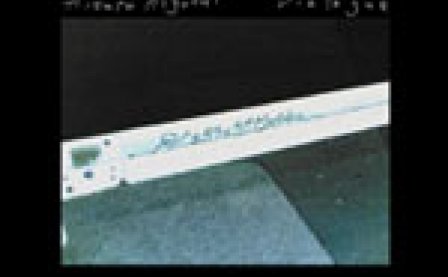The cover of Hisato Higuchi’s fourth album, Henzai, taken by Higuchi himself, looks like the cover of a Jandek album. Like Jandek’s early recordings, the music on the LP and digital-only release seems to be the product of radical isolation. And like Jandek’s
cover photos of his mythic Houston home, Higuchi seems to have ventured outside only long enough to snap a hazy, underexposed shot of the location of the record, and then run back inside. The difference is that, while Jandek lives disconnected from neighbors in a single family house, Higuchi’s photo is of an anonymous apartment block. The quietness of this record seems a product of years of sharing space with the sounds of neighbors’ noises intruding in through thin walls. The vanishing terrain of Higuchi’s music creates a private world of emotional upheaval, but in extreme miniature.
This is the most lo-fi of Higuchi’s recordings to date. Henzai features only guitar and vocals, recorded over two days without overdubs. Higuchi’s voice is more prominent on this record than any other, but that is obviously relative: his vocals are still mostly wordless, fragile sighs, accompanied by rounded splinters of the blues. His music, extremely quiet and intense, follows a minimalist compositional logic in which the smallest changes are earth-shattering — the slightest bending of a note becomes impossibly dramatic and violent. When Higuchi’s voice shows strain in approaching a high note in “Katamari Kara Nagareru Mono,” my own heart leaps into my throat.
Does the hush of Higuchi’s music evidence restraint or repression? The role of silence in the record provides an interesting entry into this unanswerable question. Silences play a large role in all of his recordings, but the way they’re recorded on Henzai reveals that they’re not merely silences. Because the recorded sounds on this album are mixed way down, the background hiss is amplified as the listener turns the signal up. The silences of the record are like instrumental breaks over which the recording medium can solo. Is this a conceptual gambit? It is certainly a shot across the bow against compression and the shuffling of MP3s. Stick these songs in any mix and the next song will be deafening.
But Higuichi’s duet partner is not so much silence as the space of his environment, both sonic and technological — the title Henzai means “omnipresense” or “ubiquity.” His web address links to the blog of a particularly sensitive ex-sorority girl in Chicago named Frances Bridges who started blogging less than a year ago and whose profile has been viewed exactly 34 times (http://itsallhappening-fmb.blogspot.com). The latest entry on her blog is a meditation on isolation and loneliness that describes the heartbreaking scene of Frances friendless, post-breakup, having to move her mattress up two flights of stairs by herself because she had no one to call. This period of isolation taught her that “hollowness wasn’t emptiness — it was space.” I think these keywords may be what drew Higuichi to her blog. Not only does Higuchi imbue his silence with significance, but he’s also titled a good proportion of his past songs “Breath.” That’s how we should think of the silence on this record: as a breath, a living space filled with vibrating air, the very medium of all music.
More about: Hisato Higuchi



